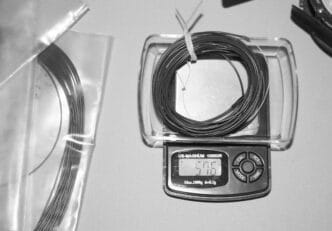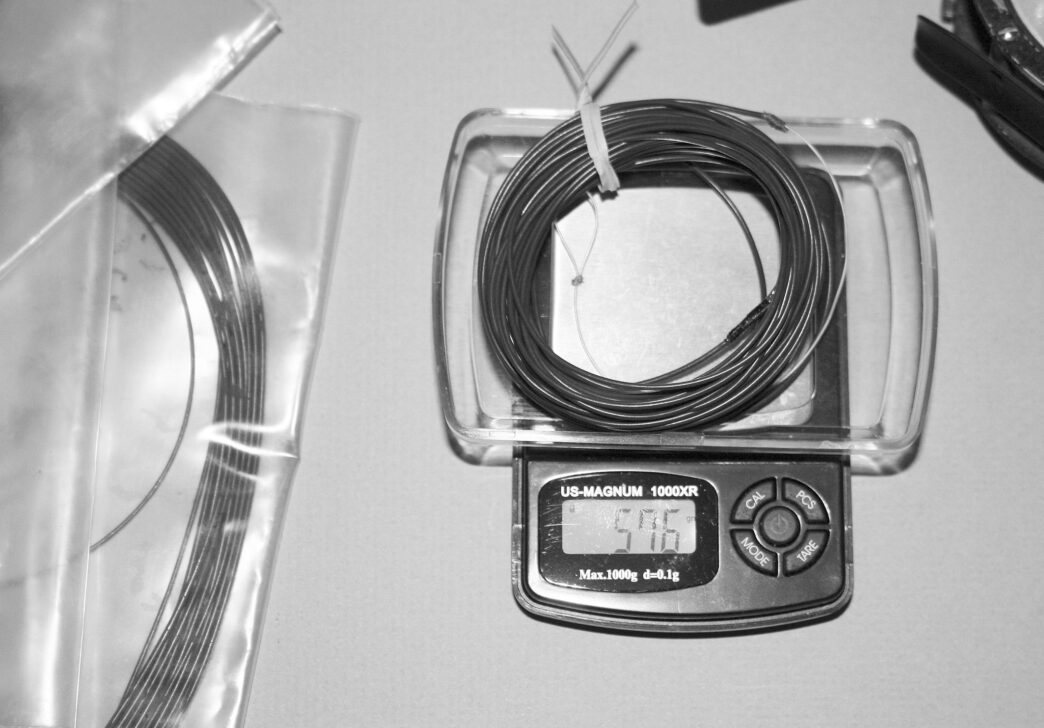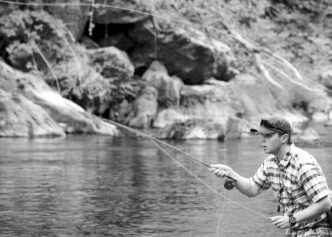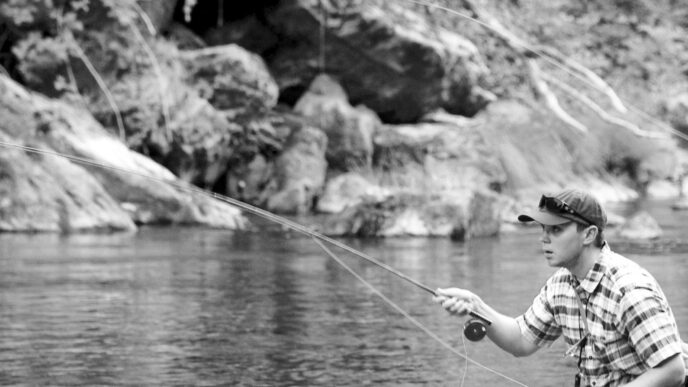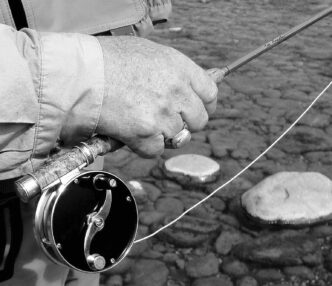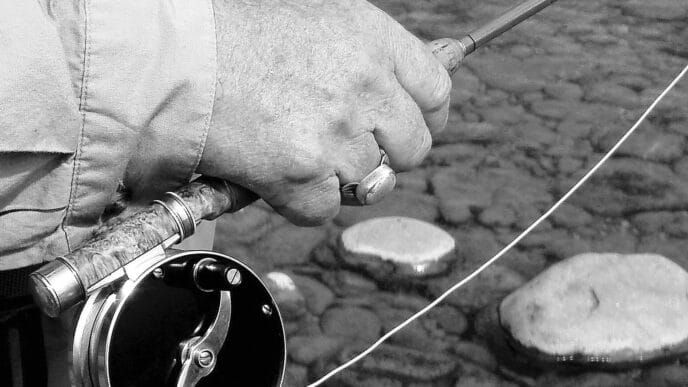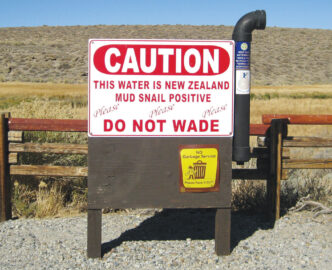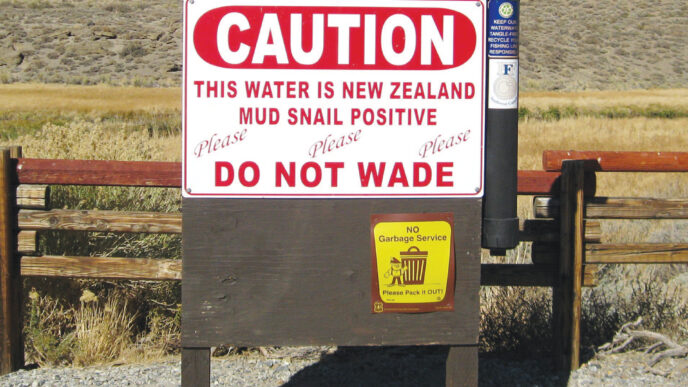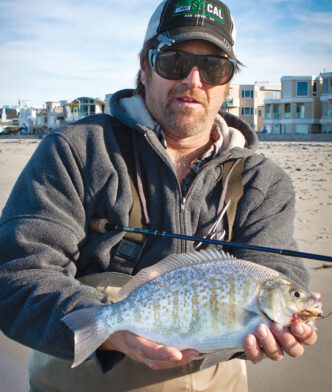“Why don’t you write something about how the warmwater scene has changed over the last twenty years?” The suggestion came from Richard Anderson, editor and publisher of this magazine, right after he informed me this issue would mark 20 years of publishing what to me is the best periodical for the California based fly angler you could hope to have.
I thought about it over a weekend. Clearly, there had been changes, but changes in what? Let’s see — I’m older by 20 years, but inside, I am still a 14-year-old boy, albeit one struggling to operate in an aging body. I’m not sure that represents a change or a continuation. I’ve given up most boat fishing these days, finding the extra regulations concerning quagga mussels and other invasive pests more of a chore than I want to put up with, plus the added fuel costs. I keep my boat registered, but it hasn’t moved in a couple of years now. Eventually I will probably stop fishing from a float tube, too. Older age and various ailments will see to that. Float tubes remain a fine way for fly fishers to target stillwater species, and a tube is certainly cheaper than a boat, probably because few politicians fish, so they don’t think about taxing float tubes out of business. (Ah, but those aren’t taxes, they are “use fees.”) Float tubes have certainly evolved over the past two decades. I still have (and occasionally use) one of the old round tubes by Buck’s Bags. They were hot stuff 20 years ago, and while they are heavy, they last nearly forever.
Modern personal watercraft — a silly name for a float tube, but they aren’t really tubes anymore, are they? — have changed a lot over 20 years. First there was the Ushaped craft, then the V-shaped, and then a horde of pontoon-reliant craft that have further confused the name. Personally, I think they provide real benefit.
Bass lakes continue to be bass lakes, and bass continue to behave like bass. Their populations come and go and either suffer or blossom depending on weather, management, and a host of other factors. Lake Perris, in Riverside County, used to be one of my favorite bass waters. The lake is still there, but I started fishing it before the Moreno Valley became known as the Moreno Valley and long before the housing boom surrounded the lake. In the old days, the lake and the state park were well out in the countryside, and now rows of identical homes push right up to the park’s boundary. Not surprisingly, Lake Perris has gotten crowded. It is still a pretty good spot, as angling goes, if you can stand fishing elbow to elbow with a hundred other people and putting up with another thousand nonfisher folk crowding the shore and the water. The same issue likewise applies to many other waters.
If anything, that’s been the biggest change for fly anglers, at least in Southern California, where I live. People in ever-increasing numbers have strained every venue for anything you care to name. “You wind up standing in line just to get permission to stand in line,” a friend of mine said. He recently moved to Utah, where, he reports, the crowds are better — except during the summer tourist season. Having been raised in Utah before returning to California (I was born here, but my family moved to a little town in Utah when I was six), I seem to remember our town growing approximately double each summer when the tourists flocked in.
Fly rods are now available that meet the length constraints of B.A.S.S. tournaments, and there’s certainly more variety in the fly tackle that’s available for warmwater anglers. But I sometimes wonder whether we’ve really seen significant improvements in gear. An old fishing buddy of mine was waxing philosophical about the fact that fly lines these days are so much better than what we had to work with “back then” when I suggested he fish with one of my new lines. He did and told me that he really liked the line. I had suggested it was an innovative product from a start-up manufacturer. The line actually was a nearly 20-year-old bass-taper. I’d discovered it in its original box among a bunch of sinking lines I was trying to sort out — see the tale told in the rest of this column — and I had spooled it up to replace another floater that was showing signs of failure. I had a devil of a time getting it back from my pal.
Flies have changed. There’s much more emphasis on subsurface fishing for bass and panfish, and the newer patterns suggest that fly tyers are taking that task seriously. Yes, a cork popper is still a staple of bass angling with a fly rod, but now the other options are considerably broader. Another aspect that has changed is the use of foam as a major component of floating bass flies.
We seem to use fewer natural materials these days, yet I can’t fault the innovative fly tyers who think up the new patterns we all want to tie. The flies are definitely better, even if they are all about chemistry, instead of being taken from natural sources.
As a sport, fly fishing has become much more inclusive. When one of the clubs to which I belong was created, a bit more than two decades ago, my wife was the only female in the group. These days, the percentage of women in many fly clubs is at least a third of the membership, and in some, it is much higher. That’s progress. What will the next 20 years bring? I know not. The chances that I will get to find out seem a little slimmer these days. Perhaps the best thing is that fly fishing hasn’t really changed all that much. That may be the saving grace of the sport. What will be interesting is to see how California Fly Fisher changes in the next 20 years.
Stay subscribed.
If you’ve been fly fishing for twenty years, or longer, as I have, you can accumulate a lot of tackle. Over the decades, for example, I’ve collected a number of fly lines used for a variety of fishing situations. Earlier this summer, I decided I needed a sinking line to fish a local lake that was growing warmer with each passing day. I had stashed it with other lines in an old G.I. ammo can that I kept in a closet, but when I pulled the can out, I realized that I had neglected to label some of the Ziploc bags that contained the lines. I stared at them for a while, trying to remember if that charcoal-colored shooting line was a 250-grain head or something else. There were also a couple of elderly floating heads home-manufactured from old Fenwick fly lines. They were of different weights, but the same mahogany color.
I couldn’t tell them apart.
To make matters worse, laying at the bottom of the box were adhesive stickers that denoted lines of various lengths and weights. They had been stuck to the outside of storage bags. Now they were useless, because the glue had not held.
Clearly, it was time to sit down and organize these remnants into something like an orderly group. In addition to the ammo can, I had perhaps two dozen different lines in a cardboard box, plus two or three bags of tackle that held reels and spools with lines. There were also three vests with reels and spools stashed in the pockets. By the time I had all this spread out on a work table, it was beginning to take on all the aspects of a much larger job than just finding one shooting head.
I’ve always been fairly good at making sure my reels and spare spools are marked with those little adhesive stickers that indicate which line is spooled up on what reel. It didn’t take too long to go through the trout stuff. But when I started on the bass lines, it quickly became apparent that I could no longer tell many of these lines — mostly sinking lines — apart.
Fortunately, a solution was at hand. Fly lines are measured by the weight of the first 30 feet of the line. Anybody with a scale that reads in grains, the standard unit of weight picked by the fishing-tackle manufacturers, should be able to tell one line from another.
A scale that weighs in grains (one ounce equals 437.5 grains) is not always easy to locate. About the only people who use grains in measuring are folks who reload ammunition or archers who weigh arrow components to create matched shooting systems. I’m not a reloader, but I do have a powder scale that I used for weighing broadheads for my archery gear. Even better, my wife, who makes and collects jewelry, has a neat little electronic scale that measures in several weight standards, one of them being grains.
It isn’t all that hard to weigh a fly line to determine where it falls in the weight classifications used by the manufacturers. (visit ices/industry-standards for tables of line weights.) Each line weight has a small spread of grain weights that define it. For example, an 8-weight line weighs between 202 and 218 grains, with 210 grains being the ideal.
After trying to measure a couple of my sinking lines with the old beam-style powder scale, I asked my wife for the loan of her electronic scale. Doing the weighing on this little scale is pretty easy. You just measure out the first 30 feet of the line, coil it up so it will fit on the scale (I recommend using a twist tie to hold the line in a tight coil — its weight is negligible), place it on the scale, and read the result. It helps if you hold the rest of the fly line so that it doesn’t exert any weight on the scale while you doing the weighing.
Using the electronic scale, I was able to work through my inventory of fly lines pretty quickly. I even weighed most of my floating lines as a control, since I knew the weights of those, or thought I did. I actually discovered I had a yellow floating line mislabeled on the reel. It was a 6-weight, but the reel was marked as a 5-weight. I needed a day or so of weighing lines to get most of the mess straightened out. This time, however, I carefully marked each plastic bag with a permanent marker rather than a stick-on label. As for marking the lines themselves, I haven’t yet found a system that I like. You can use a permanent marker to put a code on your fly line, but I find I can’t always remember what, for example, two wide lines and a narrow line are supposed to mean.



